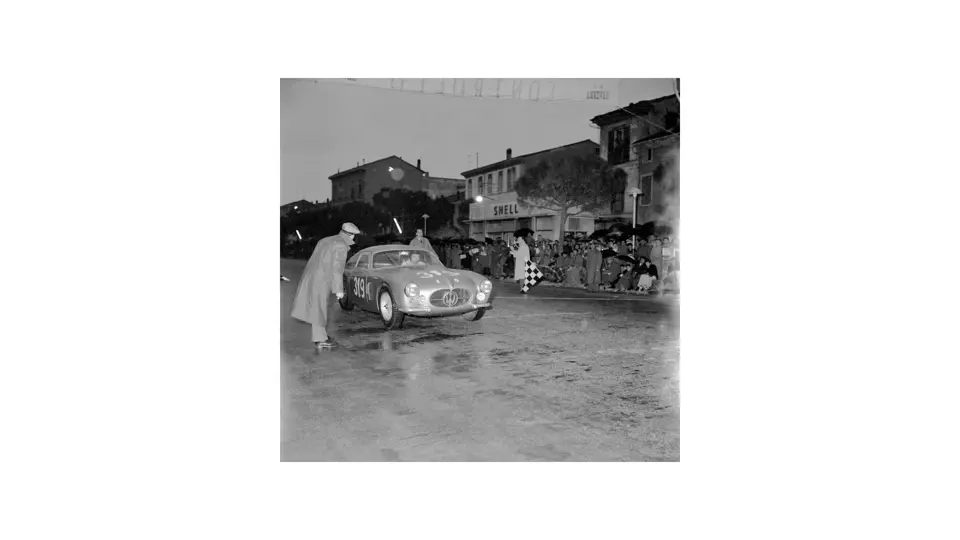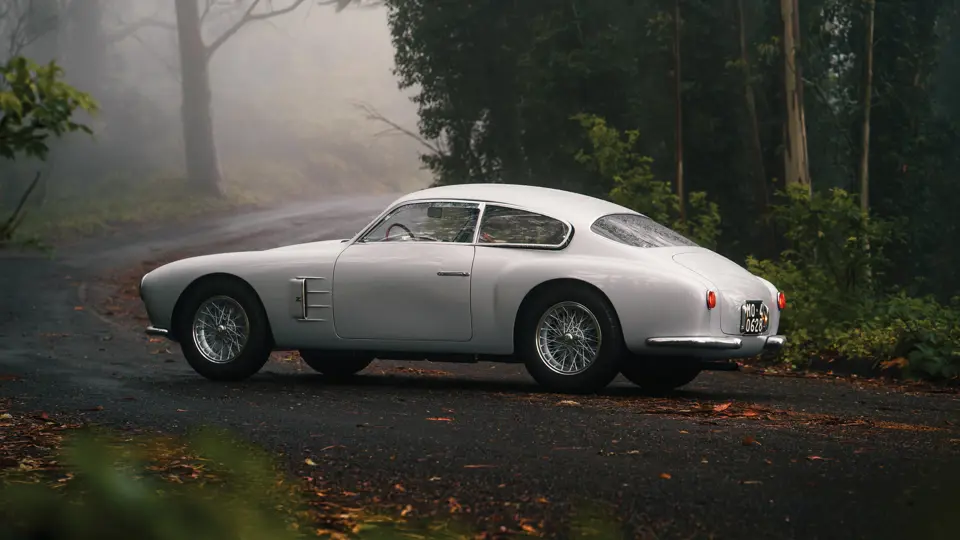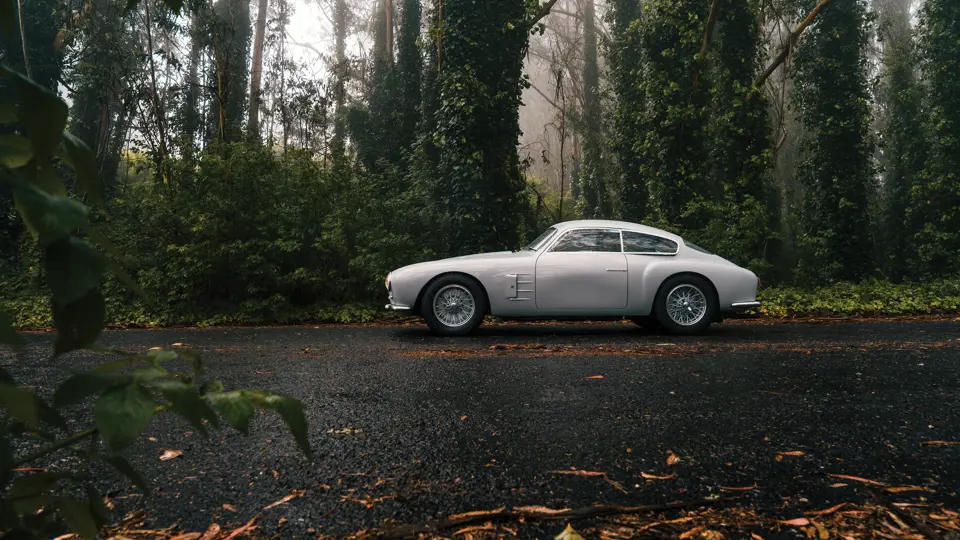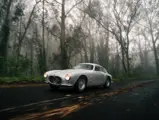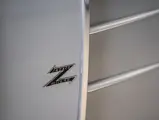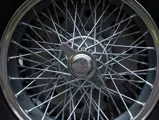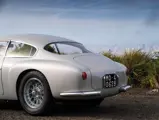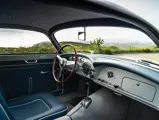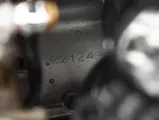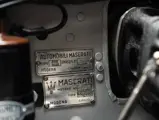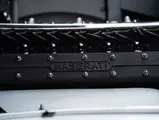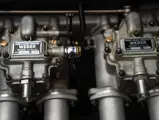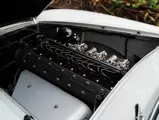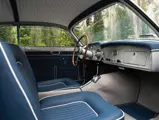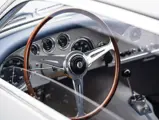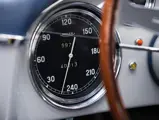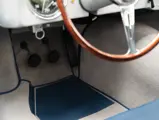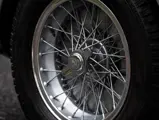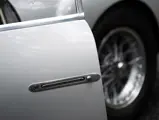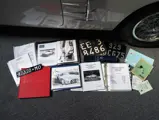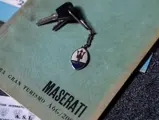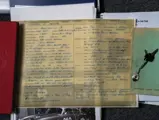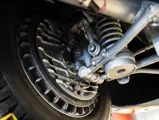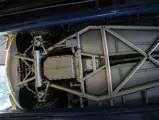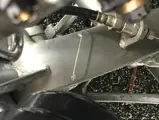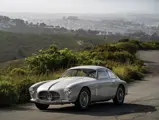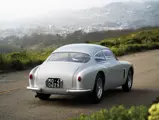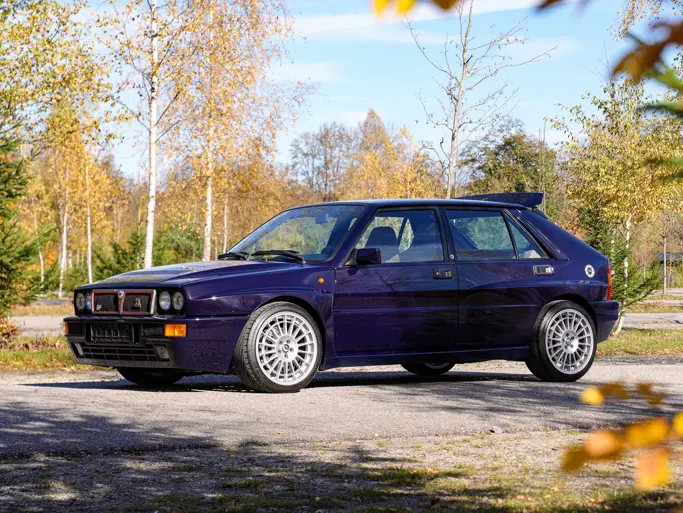
1956 Maserati A6G/2000 Berlinetta Zagato
{{lr.item.text}}
$4,515,000 USD | Sold
{{bidding.lot.reserveStatusFormatted}}
- Competed at the 1956 Mille Miglia
- The 11th of 20 Zagato-bodied berlinettas; one of 60 twin-plug A6G/54 examples built
- Unique coachwork, including singularly ornamented grille
- Retains its original factory-issued engine and gearbox
- Extensively documented by marque historian Adolfo Orsi Jr.
- Fastidious two-year restoration by award-winning experts
- Dual award winner at the 2014 Pebble Beach Concours d’Elegance
- Class winner at the 2015 Villa d’Este Concorso d’Eleganza
- Featured in numerous marque books and automotive magazines
- A rare and authentically restored Zagato racing machine
A6G/2000 ZAGATO
At the Paris Salon in October 1954, Maserati introduced a new twin-plug-ignition version of the race-bred A6G/2000, informally known as the A6G/54. Though the show car was clothed in coupe coachwork by Frua, Allemano was designated as the series coachbuilder and characteristically penned a more formal closed body.
A month after the new model’s debut, a Zagato-bodied version with alloy berlinetta coachwork appeared and it enjoyed notable racing success over the following two seasons. Lighter and more aerodynamic than the bodies posited by Allemano, Frua, or Vignale, Zagato offered a perfect complement to the A6G/2000’s Formula 2-derived chassis and engine. The Zagato berlinettas proved so successful in competition that they carried Maserati to the 1956 Italian Sports Car Championship.
Manufactured through 1957, the A6G/54 was built in a modest batch of 60 chassis, 20 of which were clothed by Zagato as berlinettas (an additional spider was built, for a total of 21 Zagato-bodied cars). The A6G/2000 Zagato has since evolved into one of the crown jewels of the Maserati stable, offering elegant hand-built details that vary from car to car. Claiming rarity, masterful engineering and aesthetics, and an impressive competition pedigree, the A6G/54 Zagato has rightly earned an important perch in the pantheon of racing sports cars, now a favorite at concours d’elegance and in exceptional collections.
CHASSIS NUMBER 2124
This breathtaking A6G/2000 originally served as a factory race car for a brief period before passing to a short ownership chain of European privateers and enthusiasts. More recently restored to factory specifications by an esteemed American collector of Italian sports cars, this A6G/54 is believed to be one of just a handful of Zagato-bodied examples currently residing in the U.S.
As confirmed by a wealth of documentation including factory build sheets, chassis no. 2124 was dispatched to Zagato in November 1955 and completed by the coachbuilder in February 1956. The coachwork featured several unique and distinguishing details, particularly the front grille, in which the trident badge was set in an oval ring laid within a more circular ring that was ornamented with dual side spears. Additionally, the hood was un-vented, the wheel arches were un-flared, and the windshield wipers rested in opposite directions. Mechanically, the chassis was initially fitted with a standard clutch before receiving an A6GCS competition clutch. Running gear included Cibie lamps, an Abarth muffler, and Borrani wire wheels, while the interior was fitted with a Smiths heater and Jaeger instruments.
In March 1956 the factory issued a certificate of origin and chassis 2124 was delivered as an exhibition and demonstration car to the distributorship in Milan, Franco Cornacchia’s Agenzia Maserati Milan. The A6G/54 was then loaned in April to Luigi “Gigi” Taramazzo (a successful privateer who more famously ran a Maserati 250F at the 1958 Monaco Grand Prix) for use in the Mille Miglia. Though he would eventually emerge victorious in 26 different races over the following decades, Taramazzo was not quite as successful that year. With the race once again plagued by rain, the Maserati’s brakes became troublesome, and the car slid off the road after a high-speed straight between Pescara and L’Aquila.
After returning to the factory for repairs, 2124 was sold in August 1956 to its first private owner, Antoine Cicoira, an Italian hotelier residing in France (he simultaneously purchased a 200 S sports racer). For an extra fee, Cicoira was able to test the A6G/2000 on the Modena Autodromo with famed factory driver and mechanic Guerino Bertocchi. On 16 September 1956, the Zagato berlinetta debuted to a class win and 2nd-overall finish at the Coupe de Cote Turckheim-Trois Epis hill climb, and a week later the car won the Coupes d’Automne in Montlhery, setting the fastest lap time. After these races 2124 received additional maintenance at the factory-approved outlet in Paris, the Garage Mirabeau owned by Thepanier and Simone.
In May 1957 the Maserati was shipped to Senegal for entry in the Dakar Route de Quakam, but during the race the car experienced a significant accident and was subsequently returned to Italy for repairs. As a wealth of correspondence between Cicoira and the factory reveals, he desired to return the car to racing condition as quickly as possible, as he hoped to enter the 12 Hours of Reims, the Nürburgring 1000 KM, and the Tour de France. The A6G/2000 was ready for none of these races, however, and it was all the factory mechanics could do to prepare the car by mid-September for the Coupes du Salon. In the interest of time, the car was repaired without the unique original grille treatment and instead received a more standard front-end configuration.
In October 1957, Cicoira ran the A6G/54 in the Coupes du Salon while joined by Jose Behra (brother of Jean Behra), finishing 6th overall. This appeared to be Cicoira’s final race in 2124. By January 1960 he sold the Maserati to Fivos Razis, a former Greek army officer turned actor who commissioned work from the factory, including a partial rebuild of the engine, clutch, and gearbox, and a repaint in light metallic gray. After an incident during street driving, the car was again returned to the factory for repairs in August 1960.
THE ZAGATO, REDISCOVERED
The A6G/2000 apparently remained in France for the next 18 years, as it was discovered in Paris in 1978 by Claude Pibarot of Bar-Le-Duc. Refinished in red paint and reupholstered with striped leatherette, the car was being offered for sale after the death of the proprietor of a garage where it was being stored. In July 1980 the Zagato berlinetta was purchased by Jean-Pierre Bisiaux, the president of the Maserati Owners Club of France, and he refreshed the car with a new paint finish in red and a black interior. The A6G/54 then became well known in niche events across Europe during the 1980s, appearing twice at the Mille Miglia, and in enthusiast magazines such as Automobiles Classiques, Auto Passion, and the book Maserati, tout l’Histoire.
In 1996 this important A6G/2000 was sold to Juan Quintano, a Spanish importer of premium marques like Ferrari and Lamborghini, and around 2000 the car appeared as the cover image for Frank Oleski’s book World Sports Cars. In 2008 Quintano sold the Maserati to Mauro and Jacobo Lotti of Florence, Italy, and they re-registered the car with its original Modena tag numbers and conducted a modest freshening, refinishing the exterior in silver. Lotti entered 2124 in the Mille Miglia in 2009 and 2010, and also presented the car at the Uniques Special Ones Concours d’Elegance in Florence.
In July 2012 the A6G/2000 was acquired by the previous owner, a respected collector of vintage Italian sports cars based in New Jersey. He had long searched for a quality Zagato-bodied A6G/54 to add to his first-rate collection. After importing the Maserati to the U.S., the owner commenced a no-expense-spared restoration with the intention of returning the car to its original factory appearance, the first restoration to do so since the accident at Dakar in 1957. The award-winning experts at Steel Wings in Pennsylvania were retained to conduct a majority of the refurbishment (including most aspects of the coachwork and the chassis), while the respected Epifani Restorations in Berkeley, California, was chosen to rebuild the engine and drivetrain components. In the interest of utmost accuracy, two other A6G/2000 Zagato berlinettas were measured and evaluated as exemplars for precise dimensions, and numerous period photographs were also located and studied. All possible original alloy was saved through a careful process of coachbuilding, requiring some 2,500+ hours, while the stunning Egyptian Blue upholstery was meticulously refinished to concours standards.
Completed by mid-2014, the fastidiously restored A6G/54 was presented at the Maserati 100th Anniversary celebration at the 2014 Pebble Beach Concours d’Elegance, winning 2nd in class as well as taking home the Vitesse Elegance Trophy from the Petersen Museum. At Amelia Island the following year it won Best in Class (Sports and GT Cars 1955–1959) and a few short months later, the breathtaking car won its class at the prestigious Villa d’Este Concorso d’Eleganza at Lake Como, Italy.
Once again featuring its unique original grille treatment, this extremely authentic A6G/2000 has been featured in numerous books, including marque expert Walter Baumer’s Maserati A6G/2000 Zagato and Giorgio Nada’s Benzina e Cammina (edited by Luca Delli Carri). The rare Zagato-bodied berlinetta is accompanied by original manuals and a tool kit, and is exhaustively documented with ACI registrations, factory correspondence, numerous period photographs, and a thick volume of research by marque historian Adolfo Orsi Jr., in addition to documentation of its exhaustive restoration.
Chassis no. 2124 is also notable for retaining its original engine and gearbox, as confirmed by documentation from Maserati Classiche. This unique A6G/54 Zagato, one of only 20 such cars built, has rarely been displayed in the U.S. It is eligible for the world’s best driving tours and the finest international concours, as well as offering its next owner membership in an exclusive group of the world’s top collectors who have added this prized model to their collections. It is sure to be a star wherever it goes, as one of the rare Modenese jewels that contributed to the marque’s 1956 Italian Sports Car Championship.


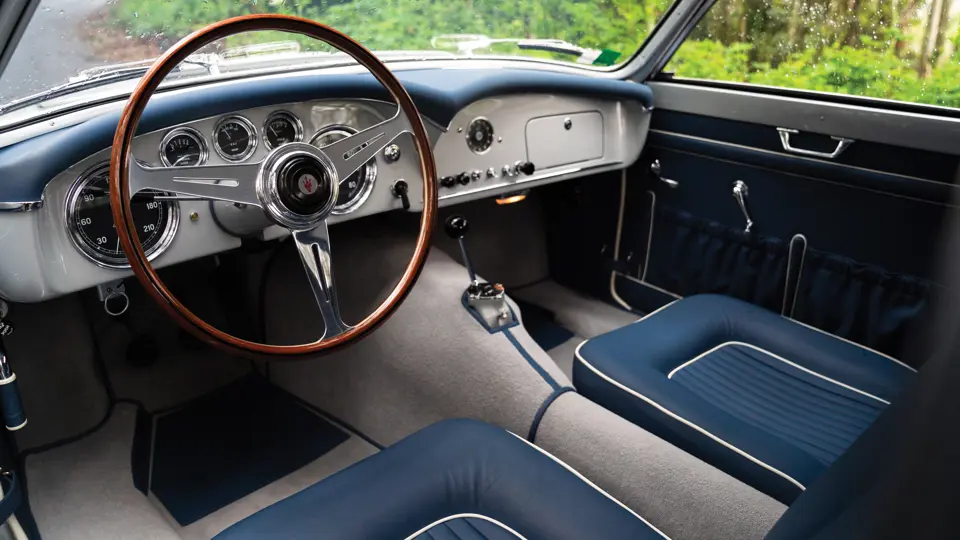

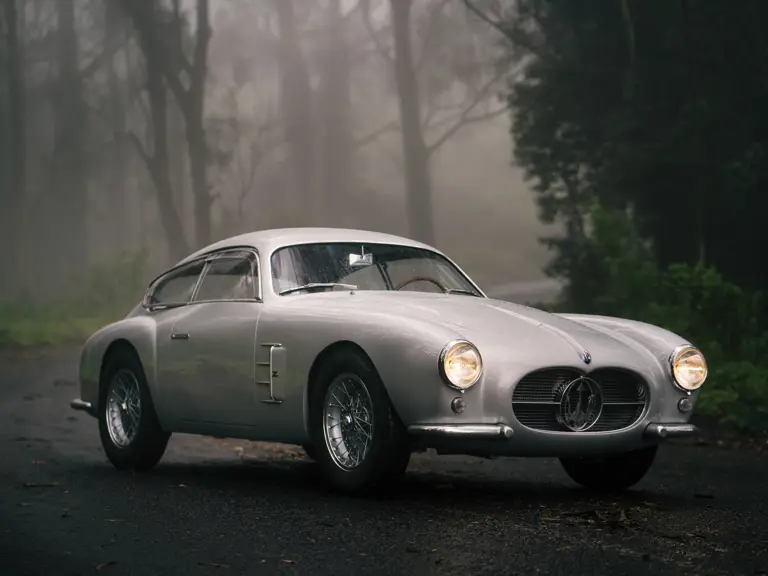
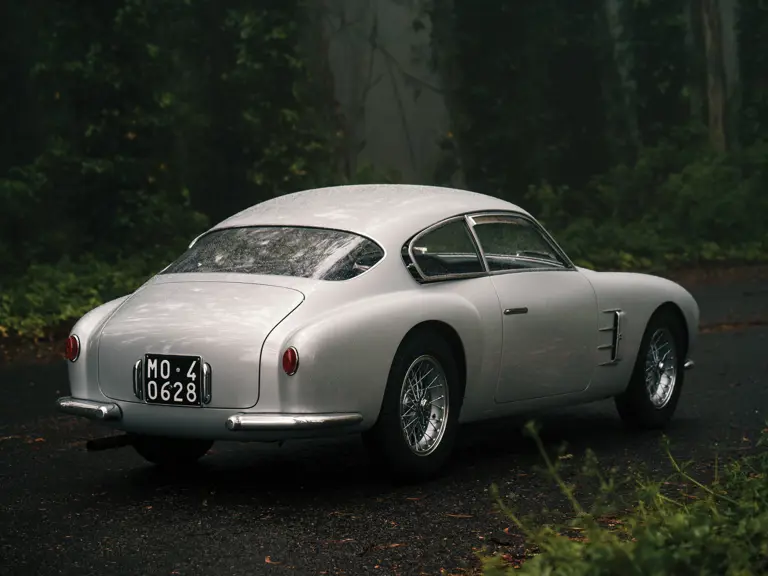
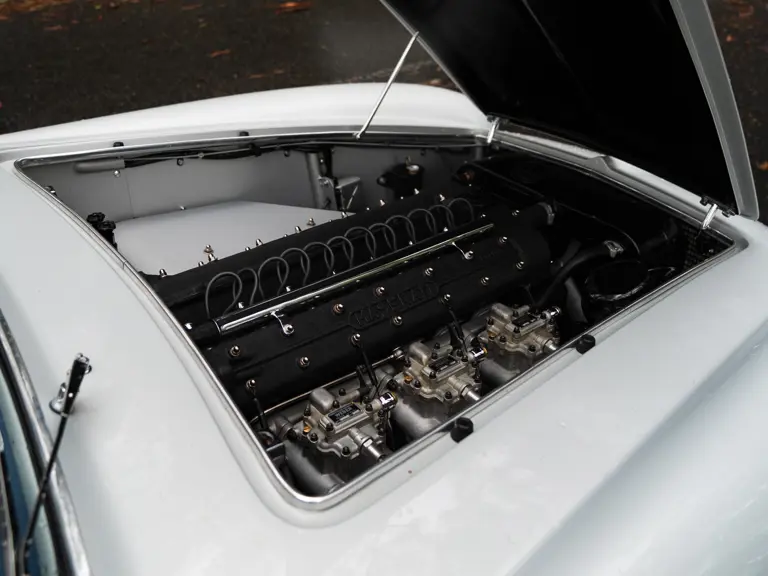
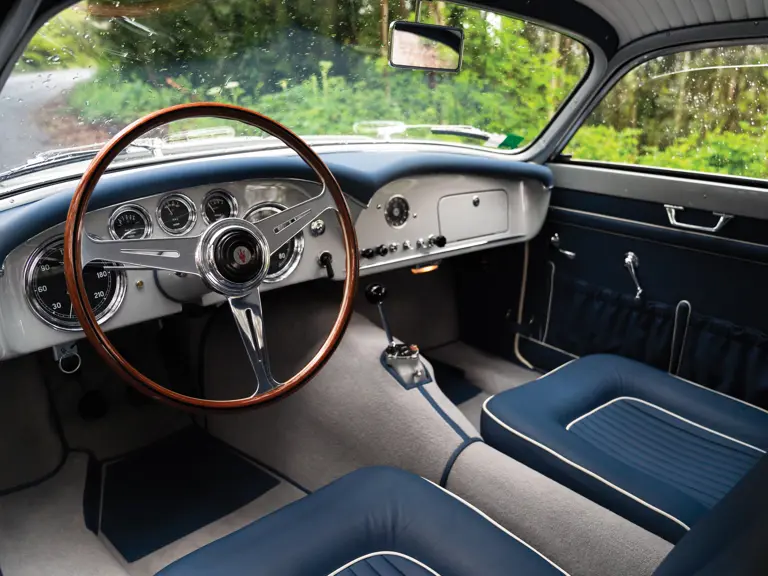

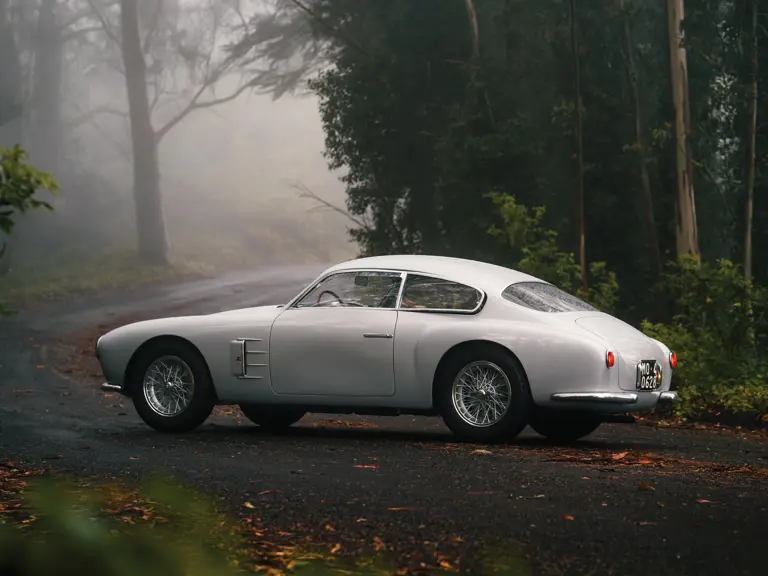
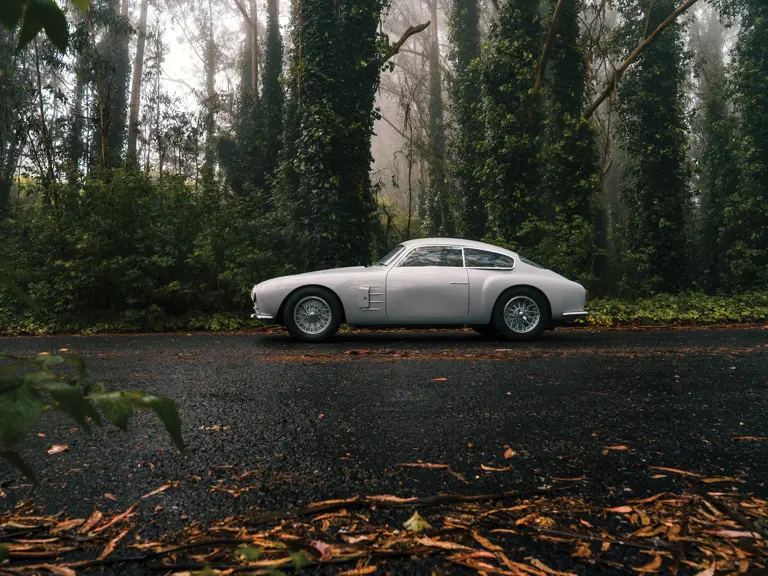
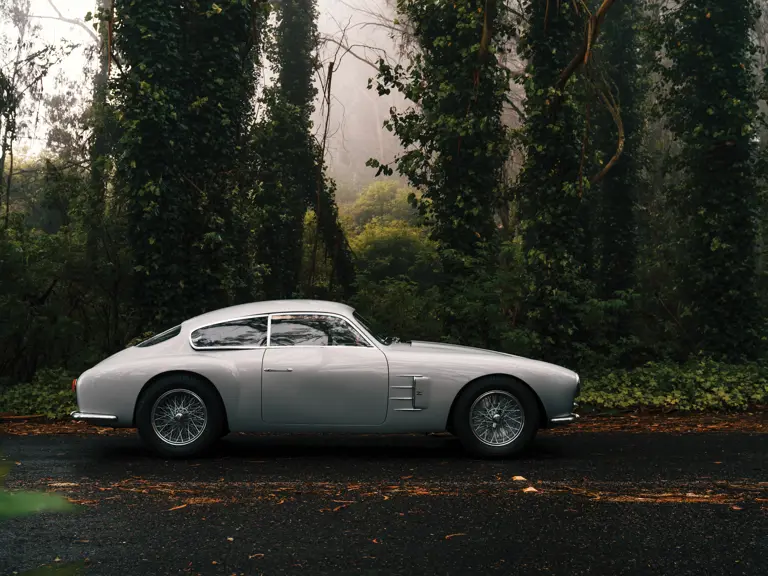
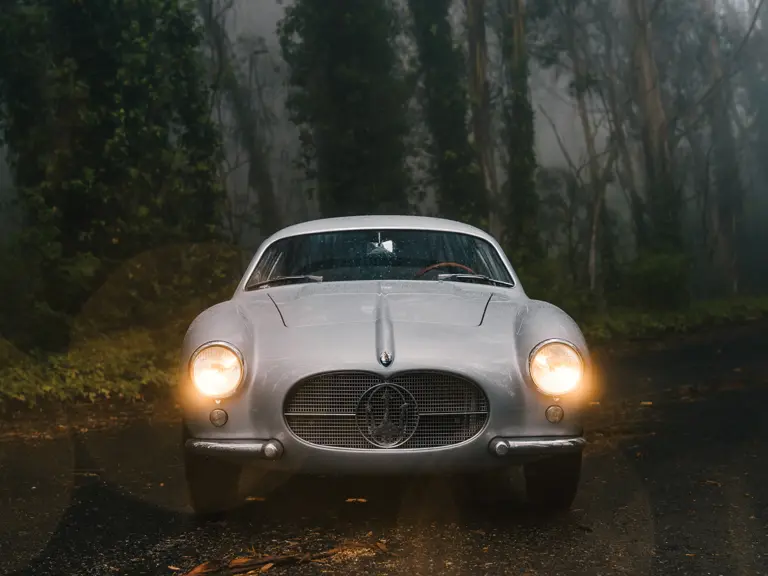

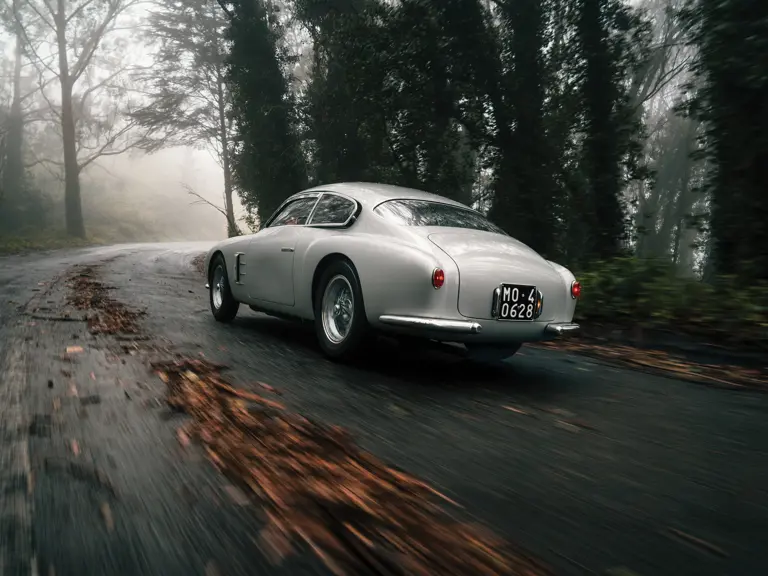
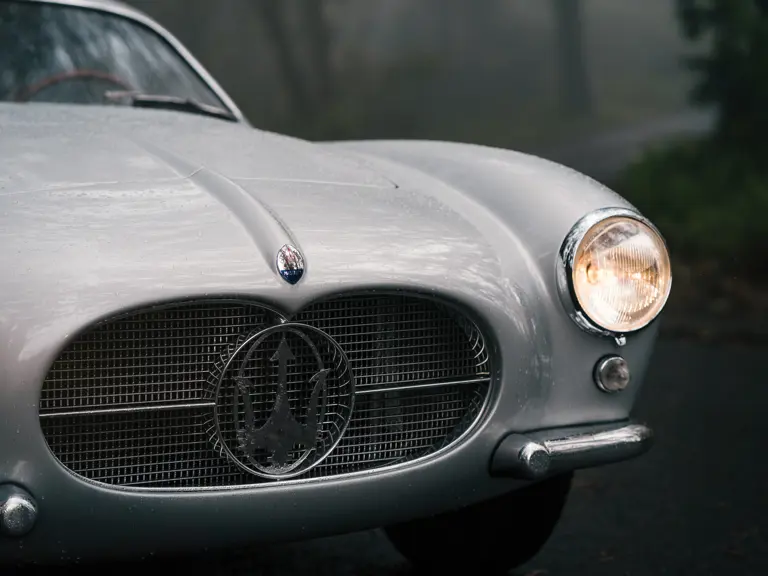
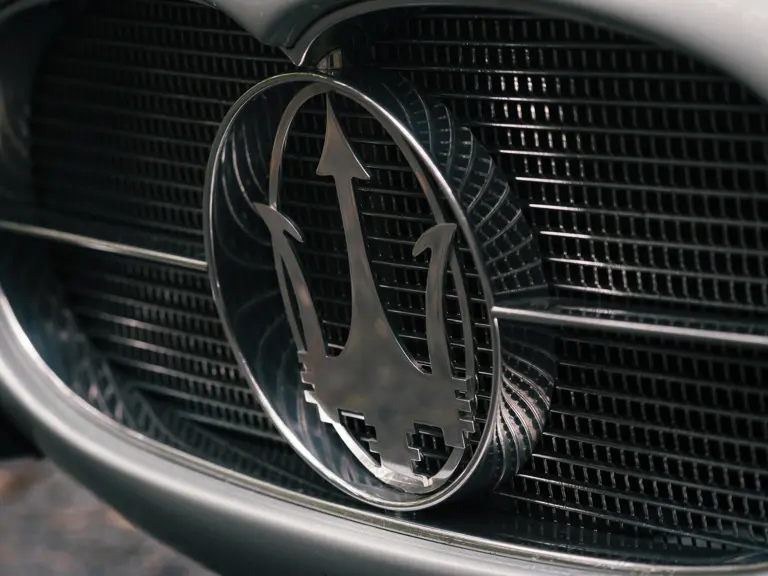

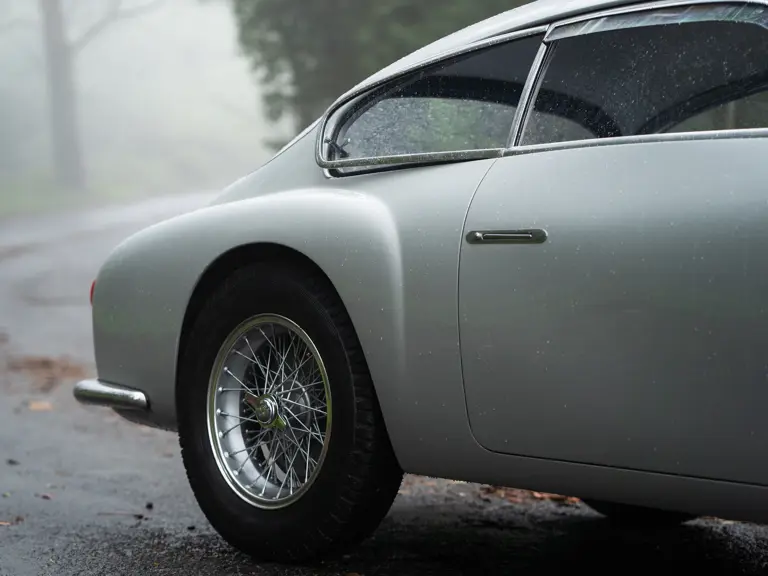
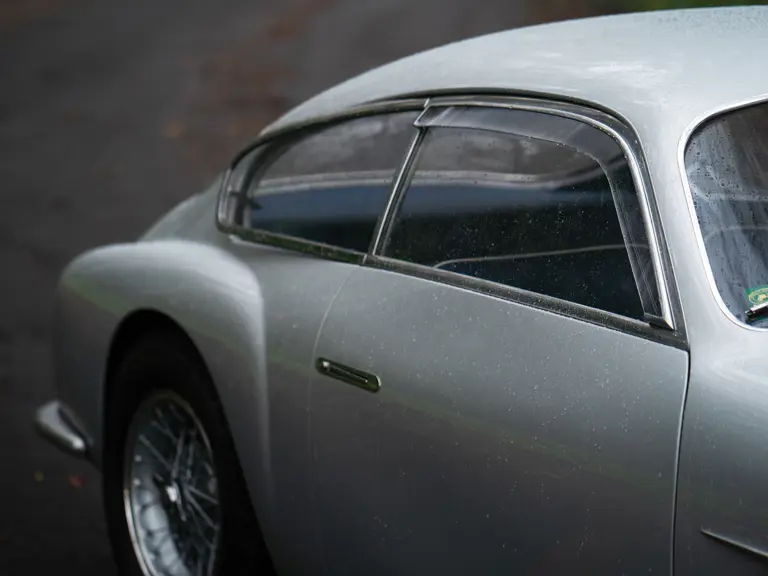
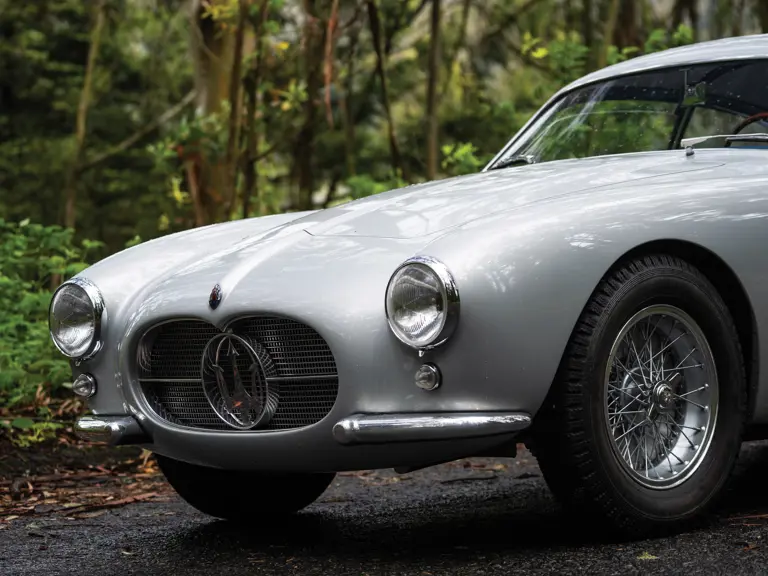
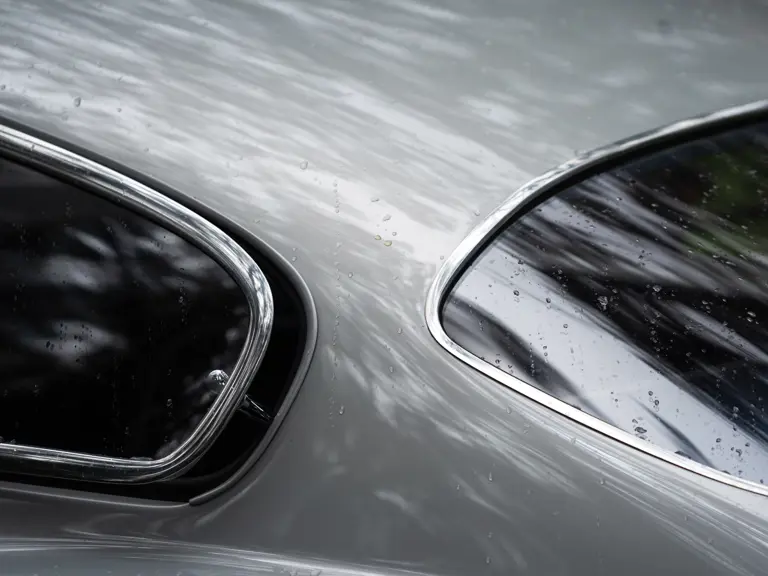
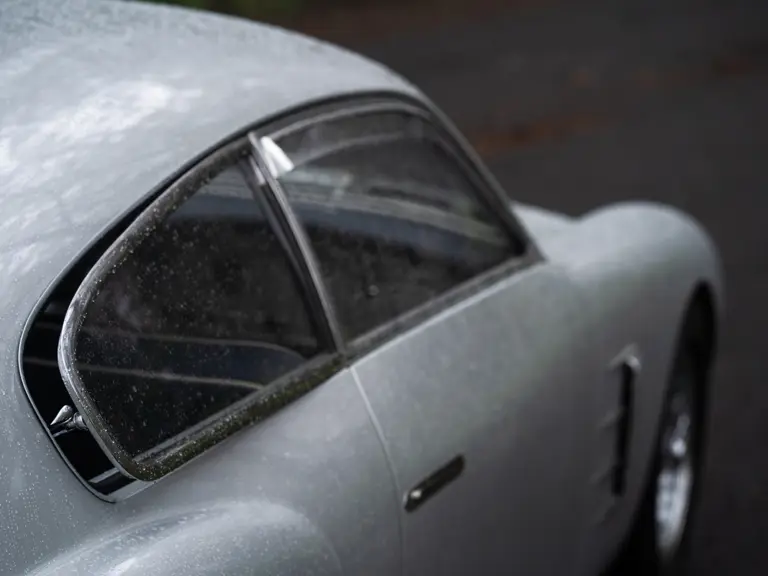
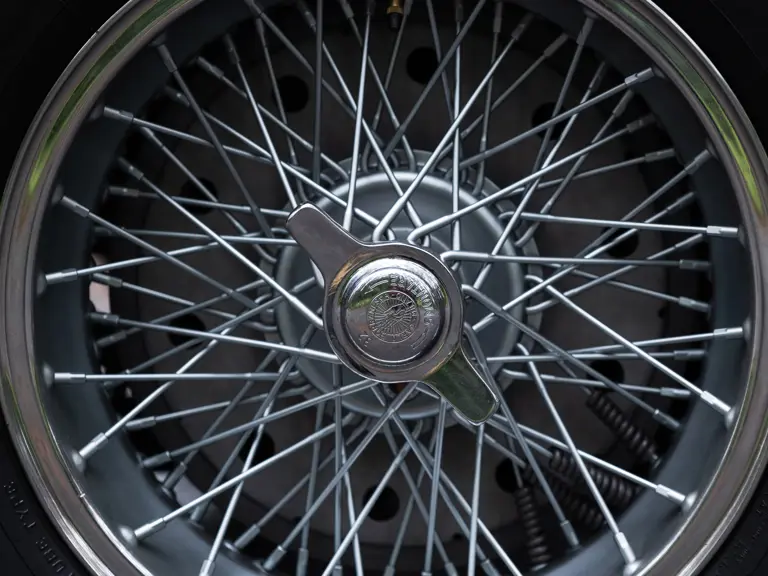
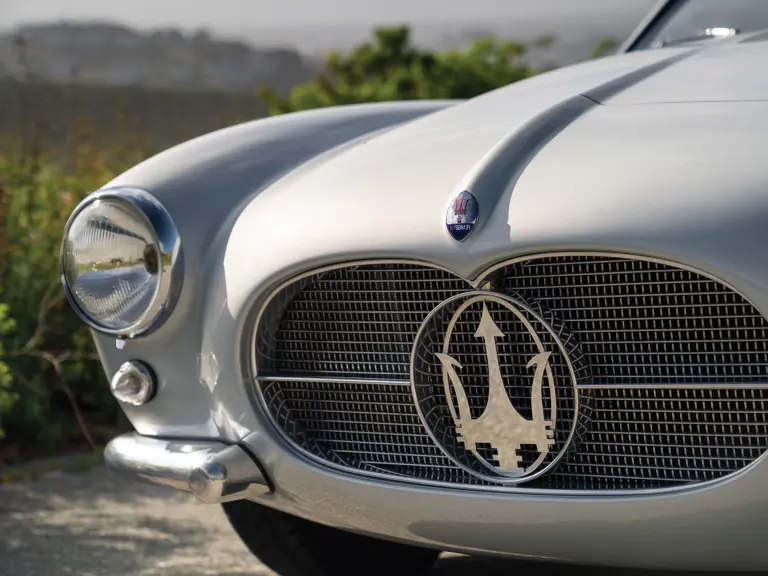
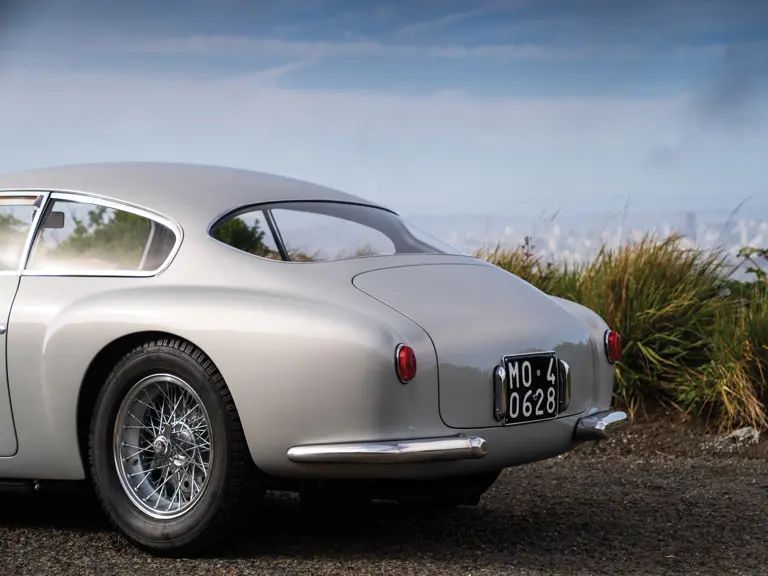
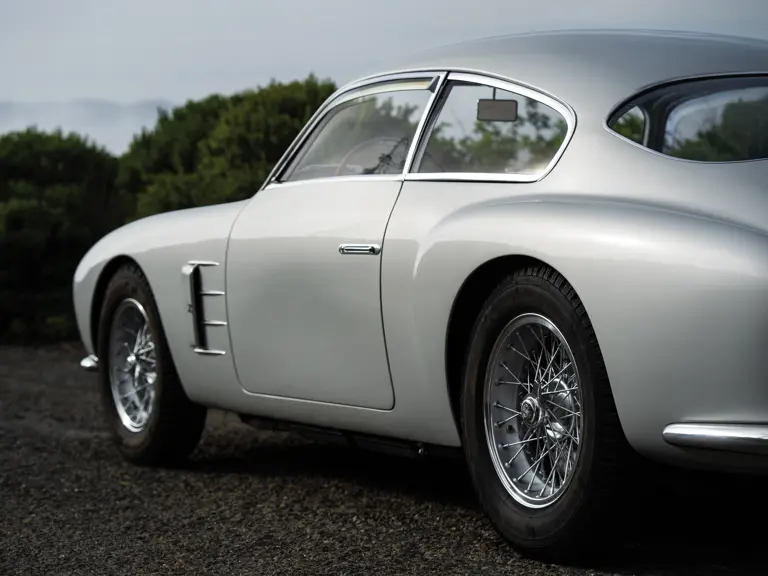
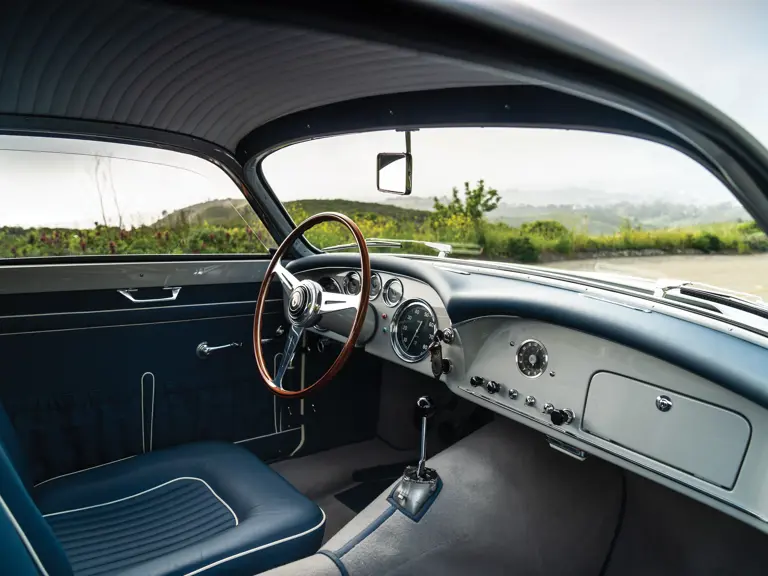
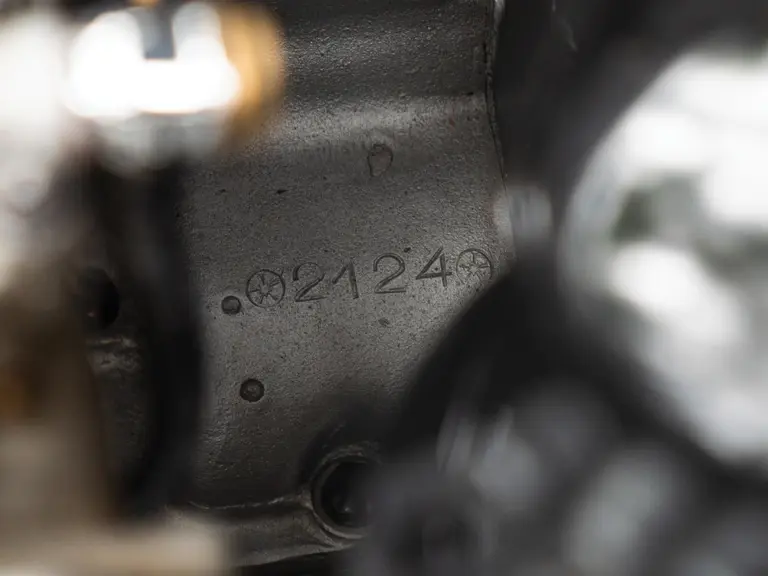
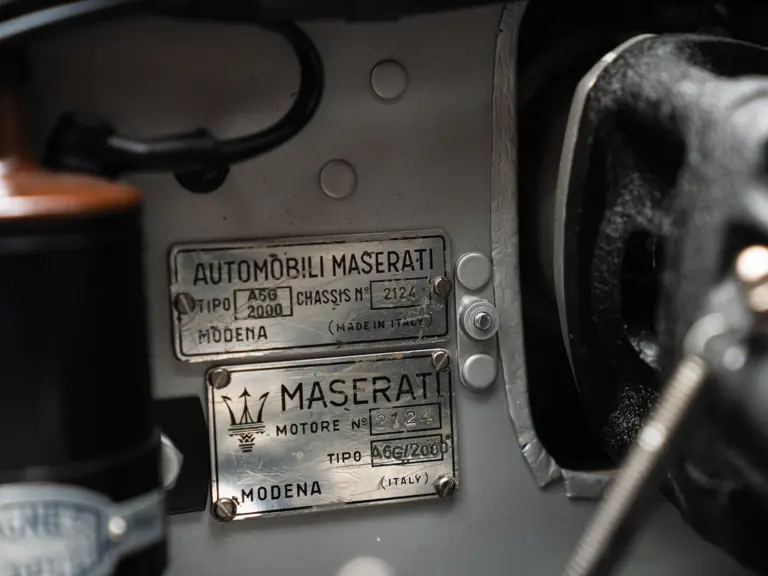
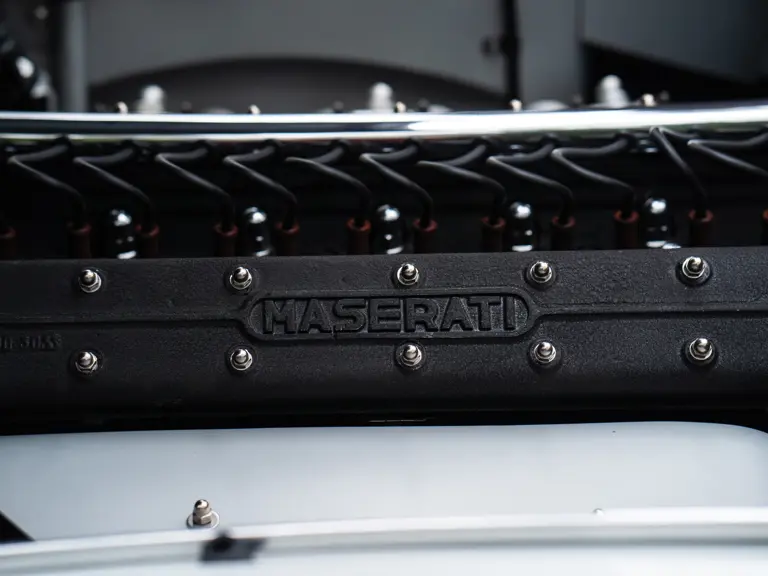
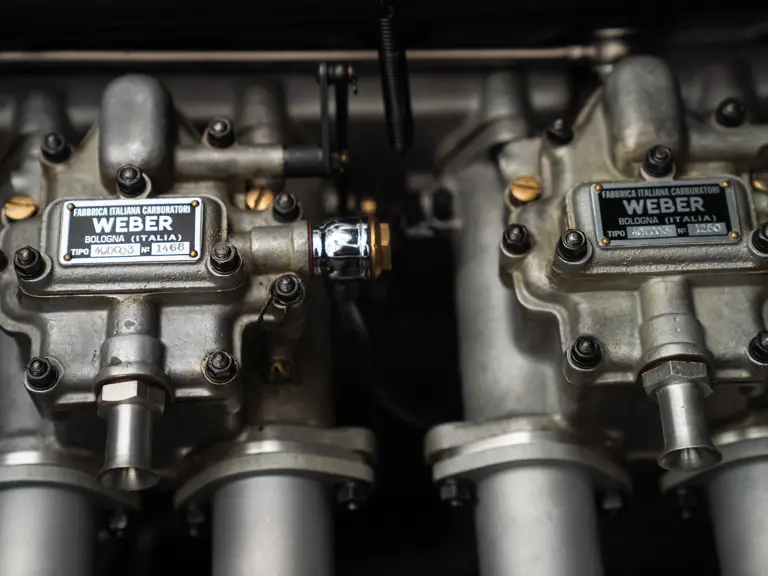
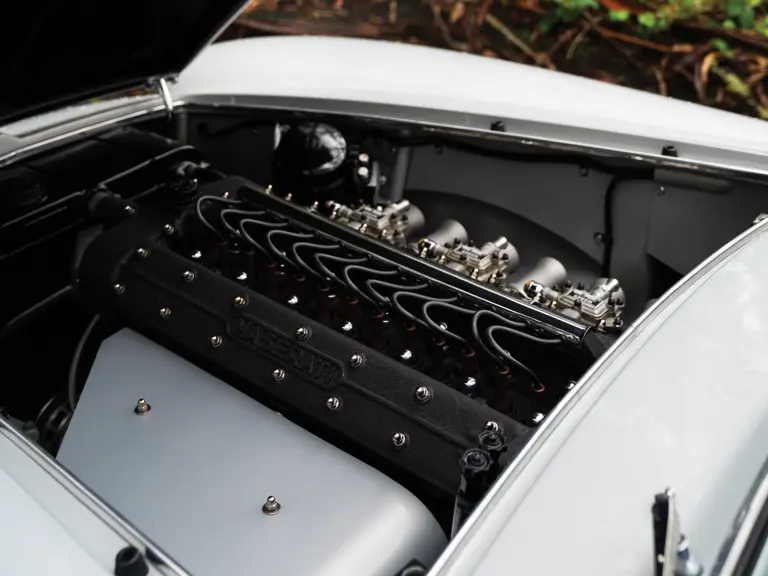
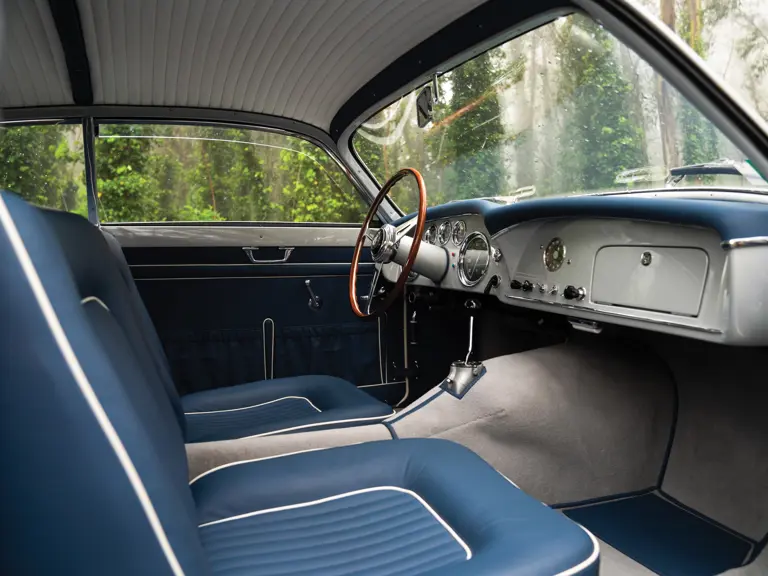
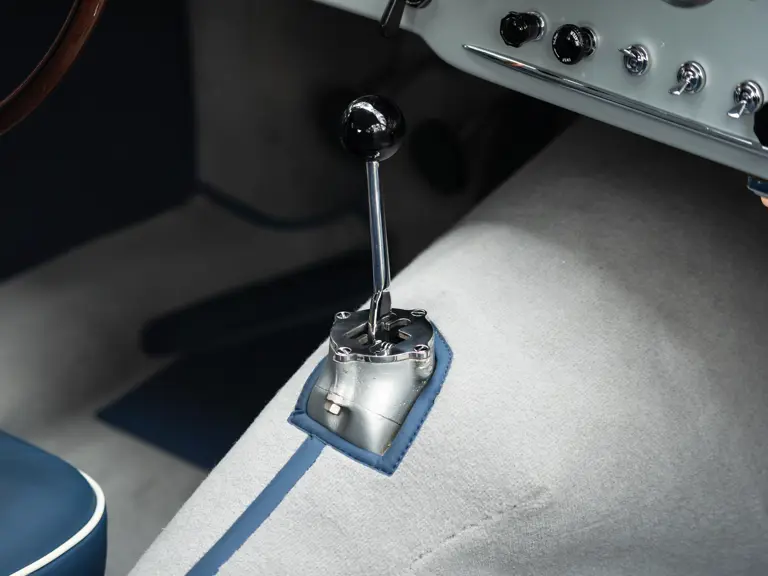
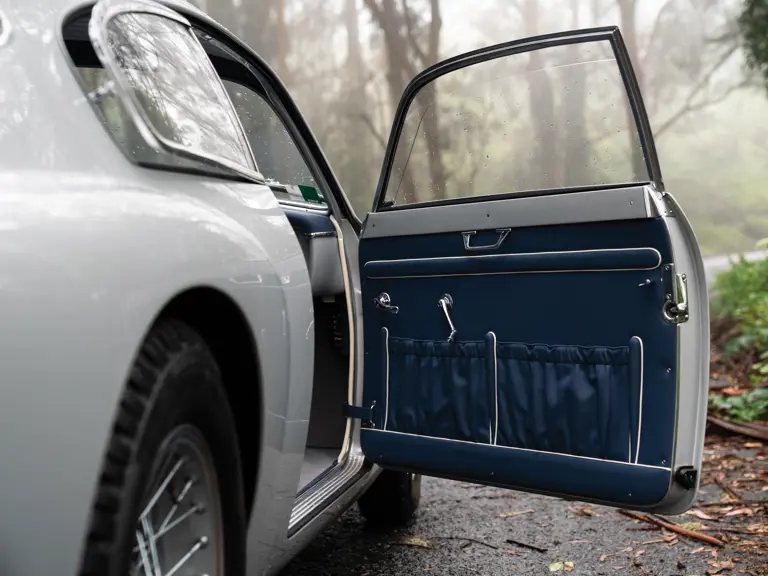
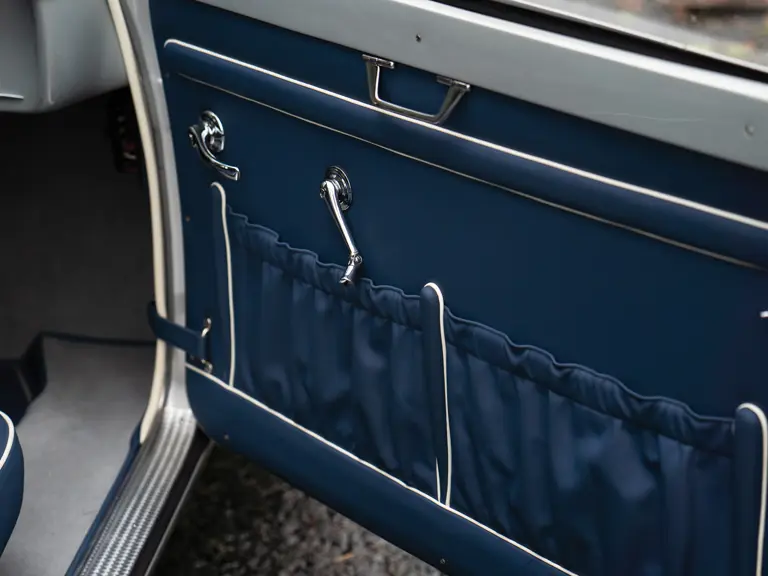
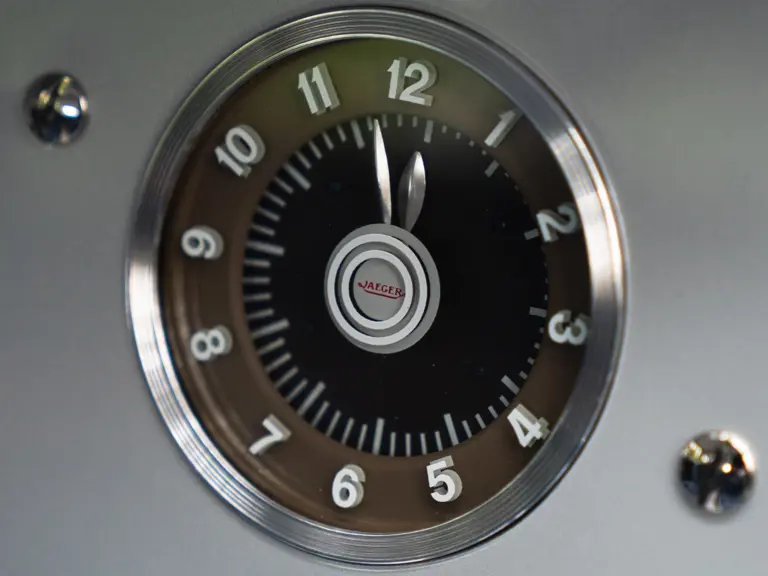
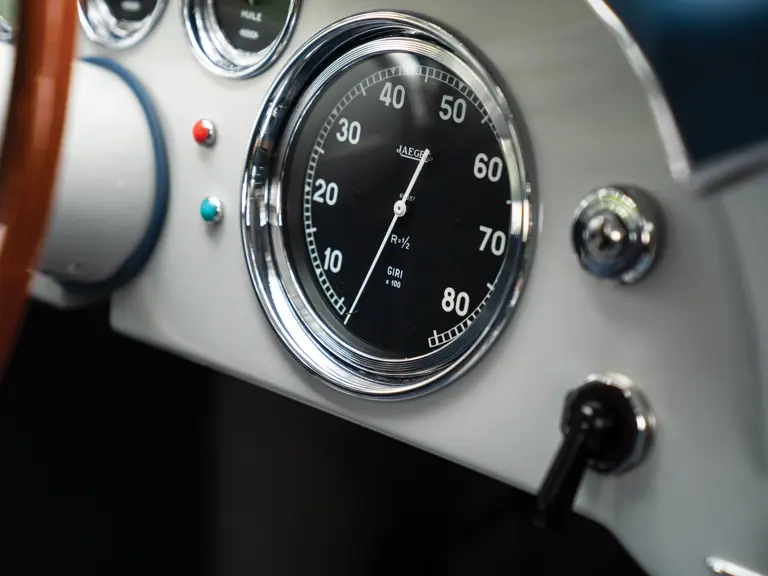

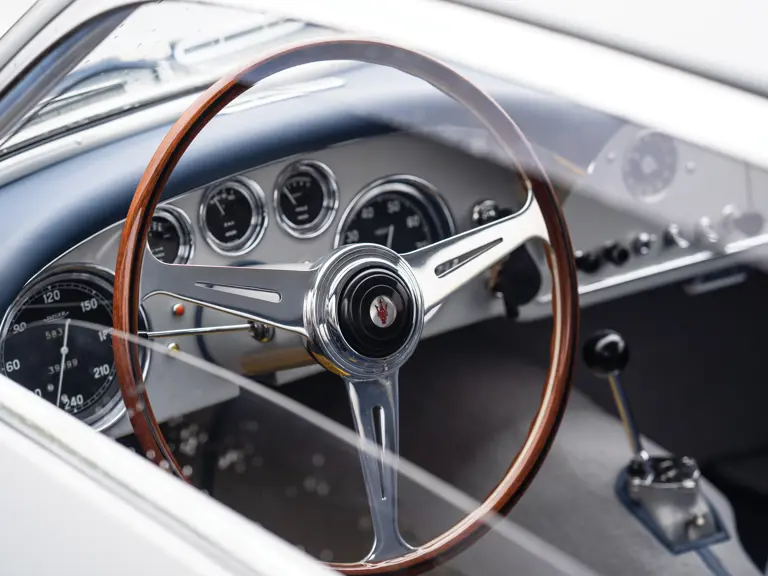

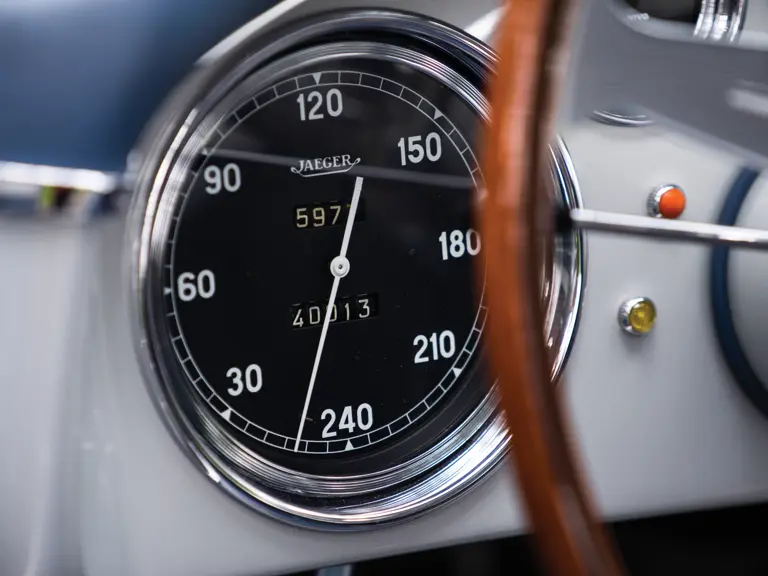

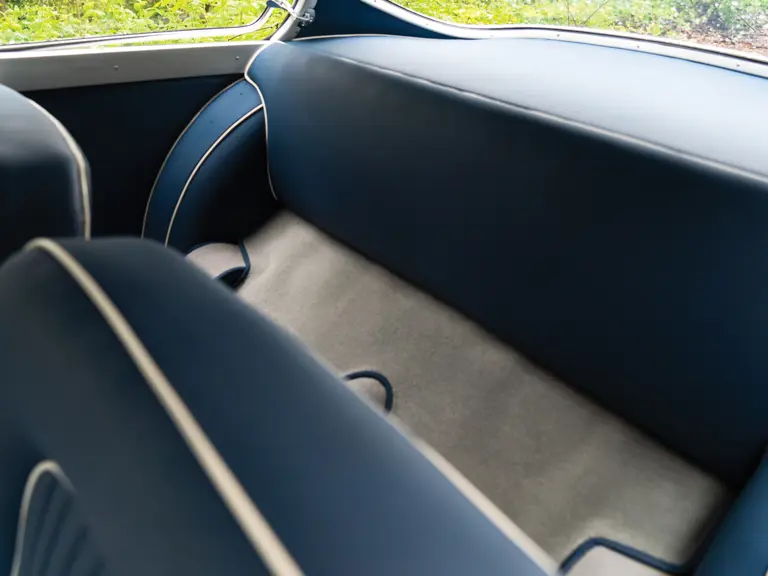

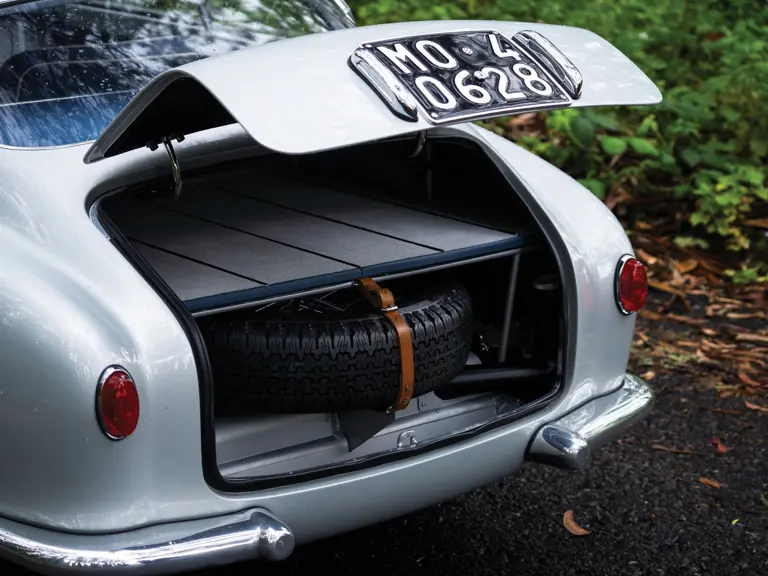
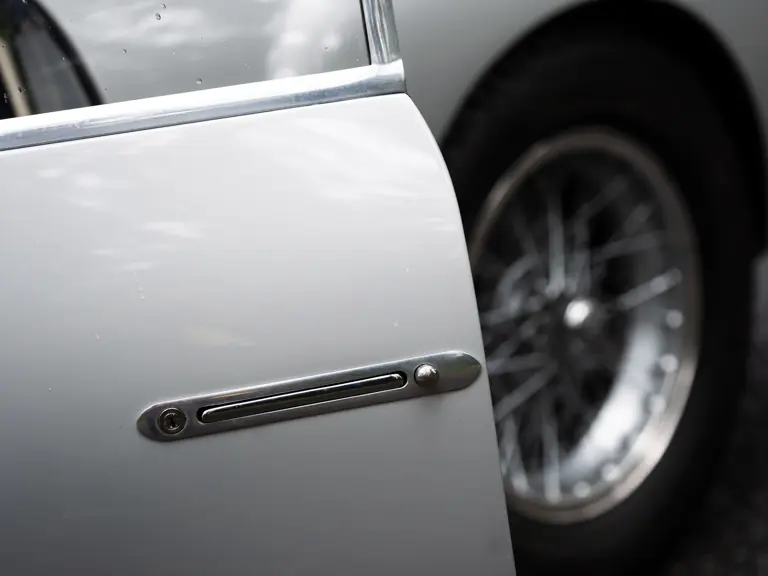
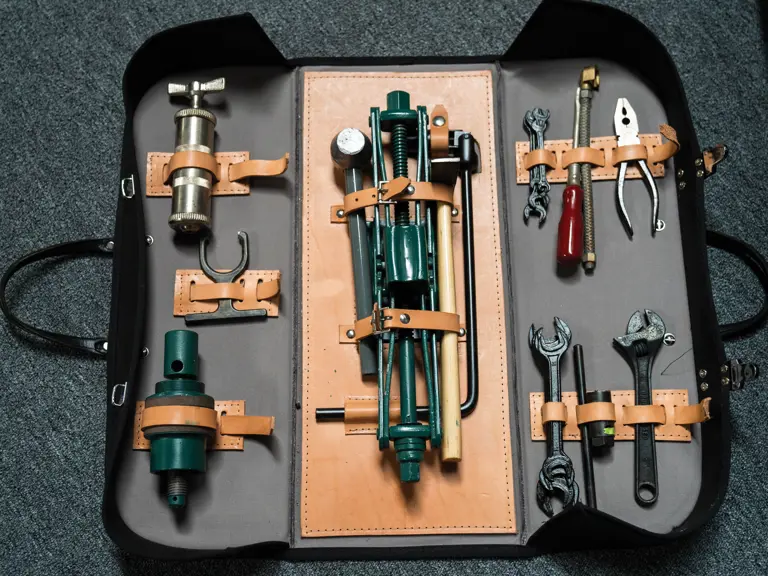


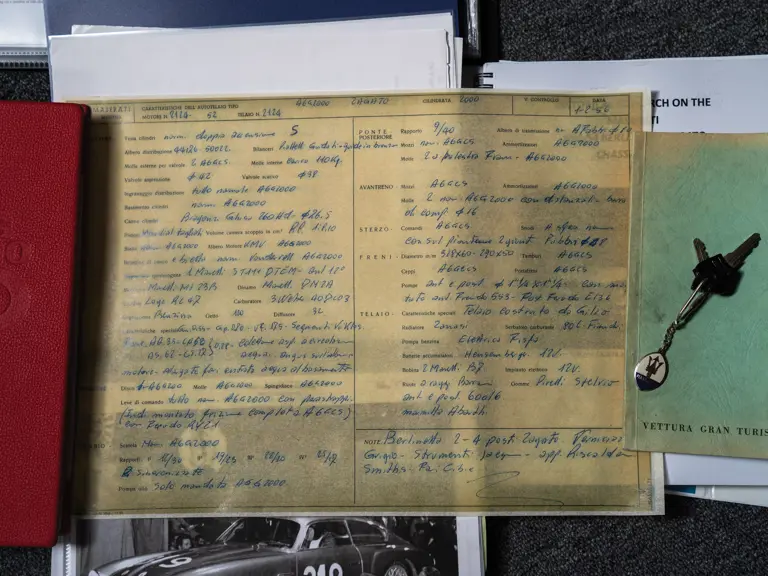
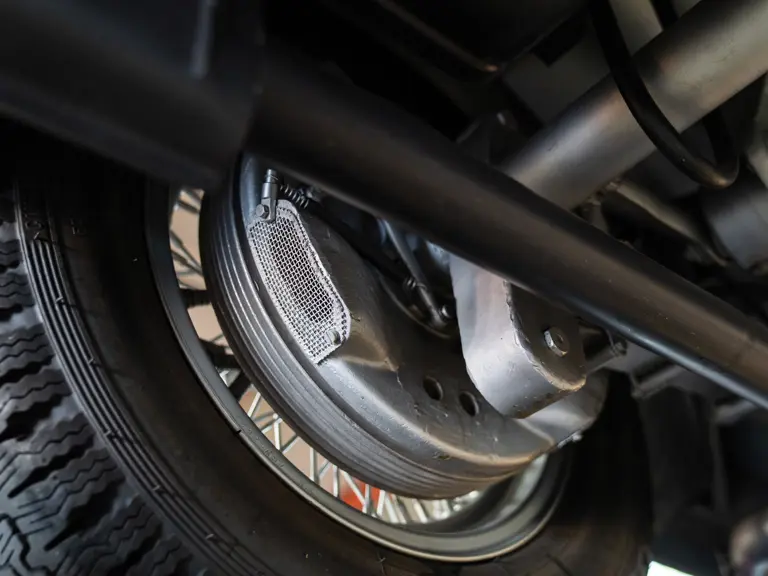
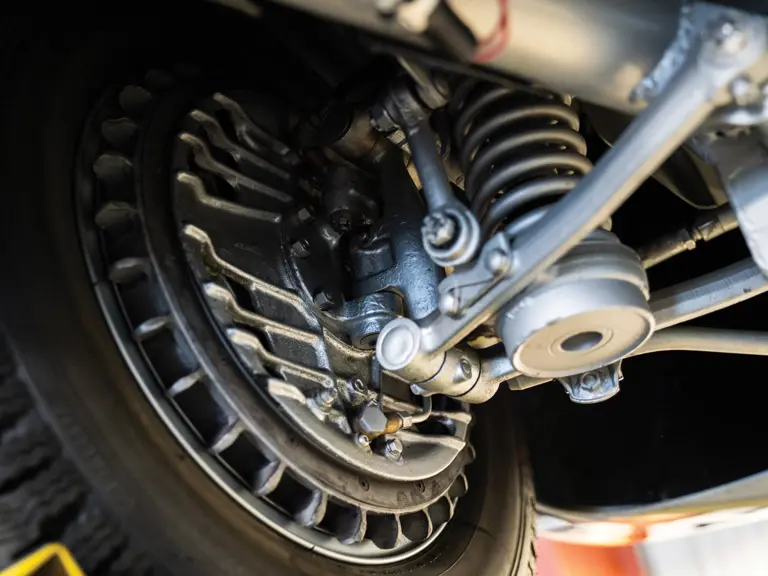
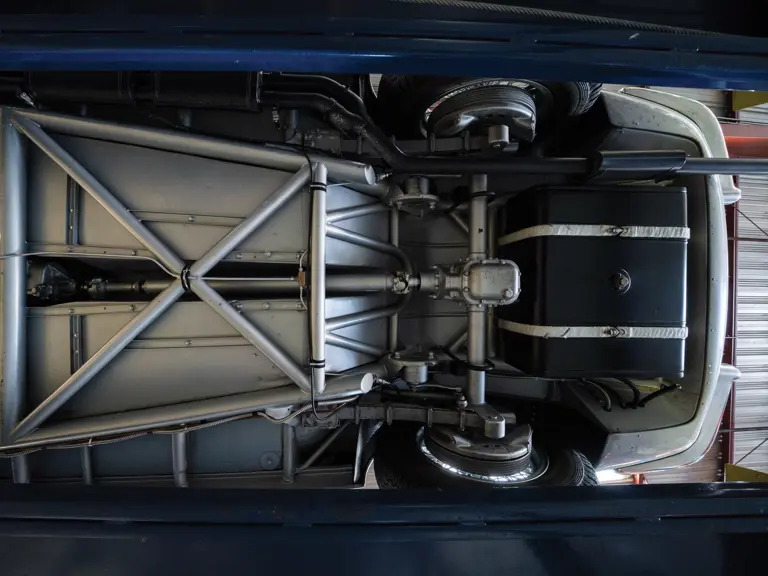
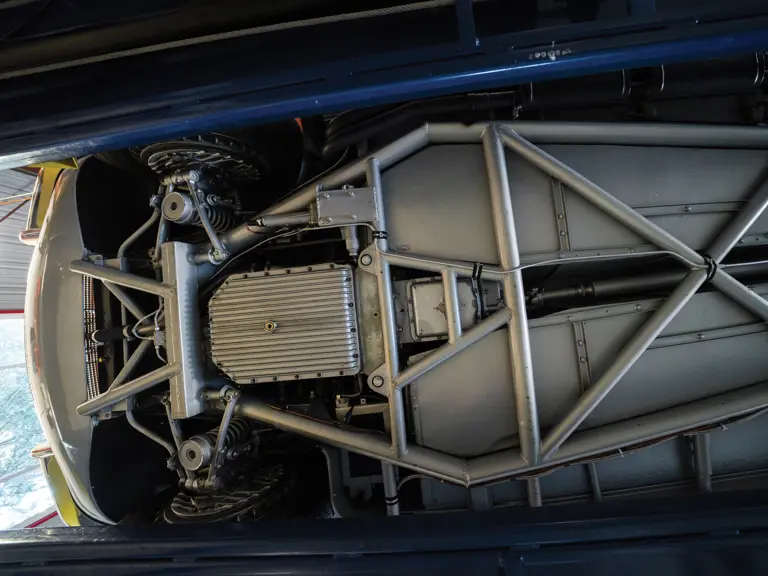
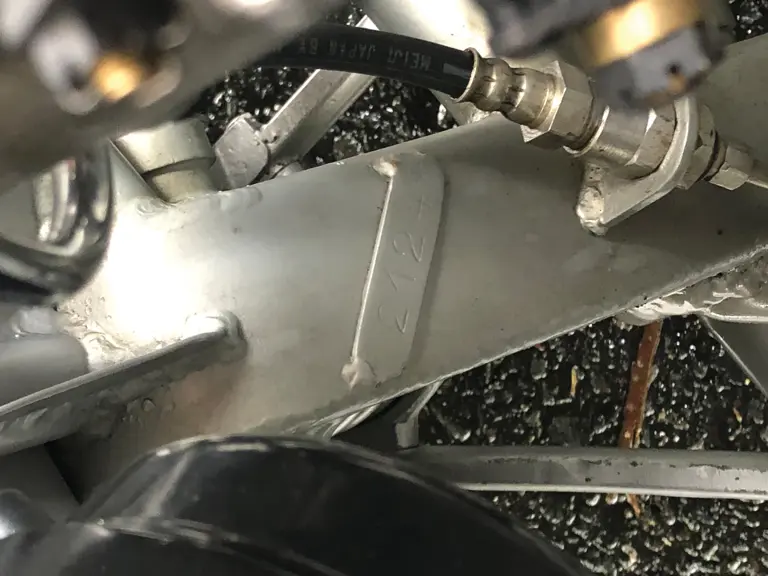
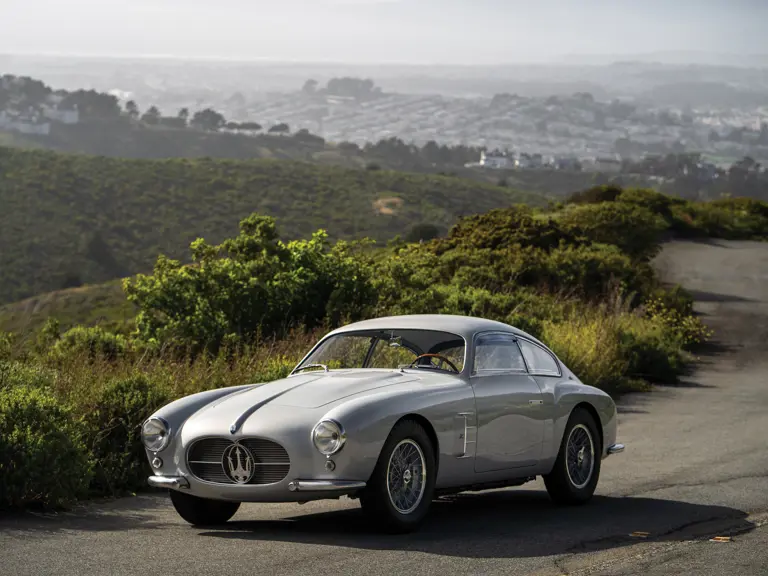
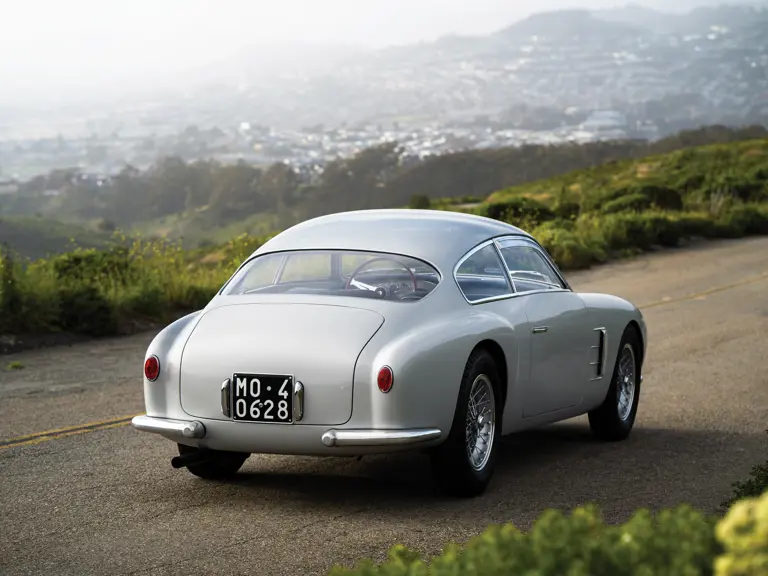
 | Monterey, California
| Monterey, California
